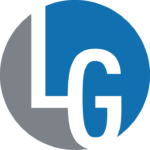Although automobile liability insurance is required across the country, there’s nothing uniform about how much insurance we’re required to have. For example, Minnesota requires its resident drivers to carry minimum liability insurance of $30,000 per person with a total maximum of $60,000 per accident along with $10,000 for property damage. Arizona only requires $15,000 per person and a total maximum of $30,000 per accident with $10,000 for property damage. In either case, that’s just not enough liability insurance coverage.
Some car accident injuries don’t just end with a sore neck for six weeks. Some end up with a broken neck and surgery, and sometimes the person who caused the crash was uninsured or a hit-and-run driver. That’s when you thank yourself for having bought uninsured motorist insurance (UM) from your own insurance company. If you’ve been injured in a motor vehicle collision at the fault of an uninsured motorist, you can make your claim for compensation for personal injuries against your own insurer.
What is an uninsured motorist?
There are four types of drivers who might be classified as uninsured motorists. Those are people who:
- Have no motor vehicle liability insurance whatsoever
- Have less motor vehicle liability insurance than is required by law
- Are insured by a company that can’t pay a claim
- Are injured by a hit-and-run driver
Who is covered by uninsured motorist insurance?
You and any passengers of your insured vehicle are covered by uninsured motorist insurance if any of you are injured in a motor vehicle collision that’s caused by an uninsured driver. Most policies even cover residents of your household who are blood relatives. You and those relatives are even insured if an uninsured driver injures any of you as pedestrians or bicyclists.
Underinsured motorist insurance
Underinsured motorist coverage (UIM) is part of your UM coverage. You and your additional insured people are covered by it when the limits of the policy of the person who caused the crash aren’t sufficient to pay all of the damages resulting from an accident. Your UIM coverage is triggered when the coverage of the other driver who caused the collision is exhausted. His or her policy limit is then deducted from your UIM policy limit. For example, let’s say you have $100,000 of UM/UIM coverage. If your neck fracture and surgery resulted from the negligence of a driver who only had $15,000 in liability insurance coverage, that $15,000 is deducted from your policy limit. It leaves you with $85,000 in UIM coverage to claim against.
What UM and UIM pay for
Most UM and UIM coverage pays for the same types of damages that you would recover from the party who caused your accident if he or she had any insurance or sufficient insurance. Some typical damages elements include:
- Past and future medical bills
- Past and future lost earnings
- Any permanent disfigurement
- Any permanent disability
- Pain and suffering
- Funeral and burial costs in the event of a death
Following the roadmap
If you intend on making a UM or UIM claim, your insurance policy sets out specific requirements that you must fulfill to make a valid claim. For example, it might require you to obtain an affidavit from the party who caused your accident stating that he or she indeed had no insurance at the time of the crash. On an underinsured claim, you might need to obtain a copy of their insurance declarations page indicating how much insurance he or she indeed had at the time of the crash.
Denials of claims and lowball offers
If you have fulfilled all of the prerequisites for making a valid UM or UIM claim, and your insurer denies it or stands firm on a low settlement offer, you can either demand arbitration or file a lawsuit directly against your own insurance company. The direction that you take depends on your policy language. Most insurers will only allow arbitration on this issue while others haven’t restricted your options. The forum that you must use depends on your specific policy language.
Uninsured and underinsured motorist coverage and claims and litigation are complicated. You’re not in good hands or with a good neighbor once you seek damages from your own insurance company. You’ll quickly learn how they treat claimants. If you were injured in an accident with an uninsured motorist, underinsured motorist or a hit-and-run driver, contact us right away for a free consultation and case evaluation. You don’t even need money up front to retain us. We don’t get paid unless we obtain a settlement or verdict for you.

